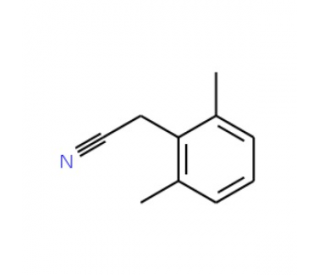详细说明
Species Reactivity
Human
Specificity
Detects human NrCAM in direct ELISAs and Western blots.
Source
Monoclonal Mouse IgG 2A Clone # 297909
Purification
Protein A or G purified from hybridoma culture supernatant
Immunogen
Mouse myeloma cell line NS0-derived recombinant human NrCAM isoform 3
Leu30-Asn600 (Ala526Pro)
Accession # Q14CA1Formulation
Lyophilized from a 0.2 μm filtered solution in PBS with Trehalose. *Small pack size (SP) is supplied as a 0.2 µm filtered solution in PBS.
Label
Unconjugated
Applications
Recommended
ConcentrationSample
Western Blot
1 µg/mL
Recombinant Human NrCAM Fc Chimera (Catalog # )
under non-reducing conditions onlyHuman NrCAM Sandwich Immunoassay
Reagent
ELISA Capture (Matched Antibody Pair)
2-8 µg/mL
Human NrCAM Antibody (Catalog # )
ELISA Detection (Matched Antibody Pair)
0.1-0.4 µg/mL
Human NrCAM Isoform 3 Biotinylated Antibody (Catalog # )
ELISA Standard
Recombinant Human NrCAM Fc Chimera Protein, CF (Catalog # )
Please Note: Optimal dilutions should be determined by each laboratory for each application. are available in the Technical Information section on our website.
Preparation and Storage
Reconstitution
Reconstitute at 0.5 mg/mL in sterile PBS.
Shipping
The product is shipped at ambient temperature. Upon receipt, store it immediately at the temperature recommended below. *Small pack size (SP) is shipped with polar packs. Upon receipt, store it immediately at -20 to -70 °C
Stability & Storage
Use a manual defrost freezer and avoid repeated freeze-thaw cycles.
12 months from date of receipt, -20 to -70 °C as supplied.
1 month, 2 to 8 °C under sterile conditions after reconstitution.
6 months, -20 to -70 °C under sterile conditions after reconstitution.
Background: NrCAM
NgCAM related cell adhesion molecule (NrCAM), also known as Bravo, belongs to the L1 family of cell adhesion molecules, which also include L1, neurofascin and close homolog of L1 (CHL-1) (1). These molecules are type I transmembrane proteins that have 6 Ig-like domains and 4 - 5 fibronectin type III-like domains in their extracellular domain. They also shared a conserved cytoplasmic region containing an ankyrin-binding site. L1 family cell adhesion molecules are expressed primarily in the nervous system where they share overlapping functions in controlling axonal growth and guidance (1, 2). NrCam mediates homophilic adhesion as well as heterophilic adhesion with a number of neuronal adhesion molecules including contactin, TAG-1/contactin-2, neurofascin and receptor tyrosine phosphatase beta (RPTP beta ) (3-5). NrCAM has been implicated in the axogenesis of multiple neuronal populations including sensory axons and commissural axons in the spinal cord of chick embryos. It also plays a role in cerebellar granule cell development, and is required in node of Ranvier formation (5, 6).
References:
Hortsch, M. (2000) Mol. Cell. Neurosci. 15:1.
Stoeckli, E.T. and L.T. Landmesser (1995) Neruon 14:1165.
Mauro, V.P. et al. (1992) 119:191.
Fustig, M. Sakurai, T. and M. Grumet (1999) Dev. Bio. 209:340.
Sakurai, T. et al. (2001) J. Cell Bio. 154:1259.
Custer, A.W. et al. (2003) J. Neuroscience 23:10032.
Long Name:
Neuronal Cell Adhesion Molecule
Entrez Gene IDs:
4897 (Human); 319504 (Mouse)
Alternate Names:
Bravo; hBravo; KIAA0343Neuronal surface protein Bravo; MGC138845; MGC138846; neuronal cell adhesion molecule; NgCAM-related cell adhesion molecule; ng-CAM-related; NrCAM; nr-CAM











 粤公网安备44196802000105号
粤公网安备44196802000105号